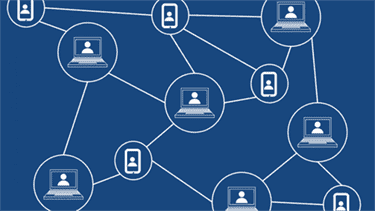Then, in a dedicated server, an automated process builds the application and runs a set of tests to confirm that the newest code integrates with what’s currently in the master branch. There are many different ways you can implement CI/CD based on your preferred application development strategy and cloud provider. Red Hat® OpenShift® Service on AWS has several options available to make your own CI/CD workflow easier like Tekton and OpenShift Pipelines.

The visualization of CI/CD pipelines as distributed traces in Elastic Observability provides
documentation and health indicators of all your pipelines. The required isolation and security strategies will depend heavily on your network topology, infrastructure, and your management and development requirements. The important point to keep in mind is that your CI/CD systems are highly valuable targets and in many cases, they have a broad degree of access to your other vital systems. Shielding all external access to the servers and tightly controlling the types of internal access allowed will help reduce the risk of your CI/CD system being compromised. With DevSecOps gaining traction, a future-proof CI/CD pipeline has checks in place for code and permissions, and provides a virtual paper trail for auditing failures, security breaches, non-compliance events. Continuous Integration (CI) and Continuous Delivery (CD) form the backbone of the product delivery lifecycle.
best practices leading orgs to release software faster
The ability to integrate developers and processes through CI/CD can increase productivity and collaboration among teams working on a project, especially when those teams are scattered geographically. Here’s a primer on how synthetic monitoring works and how to implement it in order to catch application problems early in the CI/CD pipeline. A streamlined CI/CD process lets developers actually focus on what matters and not on the distractions of problem code, missed handoffs, production issues, and more. Deploying and managing a CI/CD platform can result in big expenses if they are not kept in check.
- The context propagation from CI pipelines (Jenkins job or pipeline) is passed to the Maven build
through the TRACEPARENT. - It’s a tech process, it’s a mindset, it’s a series of steps… CI/CD is all of those things.
- In this blog on Logz.io, John Fahl says that the real key to reaching CD is creating rich testing that gives you confidence in your rapid release schedule.
- Knowing end users’ priorities, and which features deliver value to which audiences, helps teams focus on the most useful feature capabilities.
Integrating with many popular CI/CD and DevOps tools like Maven or Ansible using OpenTelemetry, Elastic Observability
solves these problems by providing deep insights into the execution of CI/CD pipelines. The Jenkins health dashboards provide insights on the build executions, the failures, the
provisioning of build agents, the active and idle workers, or the JVM health. In this guide, we’ll introduce some basic guidance on how to implement and maintain a CI/CD system to best serve your organization’s needs. We’ll cover a number of practices that will help you improve the effectiveness of your CI/CD service. Feel free to read through as written or skip ahead to areas that interest you.
Start building your CI/CD workflow
The main concepts attributed to CI/CD are continuous integration, continuous delivery, and continuous deployment. CI/CD is a solution to the problems integrating new code can cause for development and operations teams (AKA “integration hell”). Continuous deployment (the other possible “CD”) can refer to automatically releasing a developer’s changes from the repository to production, where it is usable by customers. It addresses the problem of overloading operations teams with manual processes that slow down app delivery.

The extension generates traces for each build and performance metrics to help you understand which Maven goals
or Maven submodules are run the most, how often they fail, and how long they take to complete. While keeping your entire pipeline fast is a great general goal, parts of your test suite will inevitably be faster than others. Because the CI/CD system serves as a conduit for all changes entering your system, discovering failures as early as possible is important to minimize the resources devoted to problematic builds. Save complex, long-running tests until after you’ve validated the build with smaller, quick-running tests. A robust CI/CD setup should effortlessly expand with your growing development team and project complexity.
What is continuous integration?
You’ll be able to deploy your code faster and with the confidence that your services are monitored, allowing your engineers to quickly resolve any incidents that arise over time. The feedback loop helps measure metrics like business revenue, user conversion rates, and engagement time. Use these statistics to identify improvement opportunities and work them into your pipeline. Key DevOps metrics help you understand whether the team delivers value to users quickly and which stages of the pipeline need optimizations.

Using Orbs, CircleCI users are able to easily package the commands, executors, and jobs that make up their CI/CD workflow and then send them around to any teams they want. Those teams are able to use the exact same workflow or tweak them to fit their needs, markedly speeding up the setup of new CI/CD workflows for teams on the same project. CircleCI released standardized orbs for popular pipelines so individual teams can easily get started with CI/CD using popular tools that have plenty of documentation and setup guides.
AppSec Program Services
Even the best-written code or the most flawless application will result in a poor user experience if problems in the CI/CD pipeline prevent smooth and continuous deployment. Continuous integration (CI) is practice that involves developers making small changes and checks to their code. Due to the scale of requirements and the number of steps involved, this process is automated to ensure that teams can build, test, and package their ci/cd monitoring applications in a reliable and repeatable way. CI helps streamline code changes, thereby increasing time for developers to make changes and contribute to improved software. Once you’ve deployed a modern CI/CD pipeline, you’ll likely realize that your existing tools and processes in your developer workflow will also need to be modernized. One area that you’re likely to very quickly realize needs a lot of attention is testing.

Visualizing logs exclusively in Kibana involves a simpler setup that doesn’t require access
to Elasticsearch from the Jenkins Controller. This is because the Jenkins pipeline build console
displays a hyperlink to the Kibana logs visualization screen instead of displaying the logs
in the Jenkins UI. The Jenkins OpenTelemetry Plugin provides pipeline log storage in Elasticsearch while enabling you to
visualize the logs in Kibana and continue to display them through the Jenkins pipeline build console.
The Best CI/CD Pipeline Monitoring Tools for 2023
Another critical factor is that for a deployment to be smoother, each environment other than production needs to be similar to production. Homogeneous environments might be hard to achieve in big organizations, but the idea is to use the same tooling, process, and configurations in all the environments. In CD, production is not a special environment; it’s just another stage in the pipeline.
Additionally, an observable system furnishes ample context about its inner workings, unlocking the ability to uncover deeper, systemic issues. Most pipelines also include a variety of DevOps tools that are not strictly for CI/CD. Tools for container runtimes (Docker, rkt), container orchestration (Kubernetes), and configuration automation (Ansible, Chef, Puppet, etc.) regularly show up in CI/CD workflows. Not every CI/CD process has all these tests, but the goal of continuous testing is always the same.
Learn About AWS
Also, when developers have shorter commit cycles, they probably won’t edit the same code and need merges. Software development teams should map capabilities to processes, then map processes to assets. They should also set goals for themselves along the way, such as one capability mapped per week. In these cases, some development teams may devote their team solely to updating and refining these features.
This is a gatekeeping mechanism that safeguards the more important environments from untrusted code. As an extension of continuous delivery, which automates the release of a production-ready build to a code repository, continuous deployment automates releasing an app to production. Because there is no manual gate at the stage of the pipeline before production, continuous deployment relies heavily on well-designed test automation.
Synthetic Monitoring for CI/CD Pipelines
With continuous deployment for containers, it’s not necessary to take the entire app to make an update or change. Next there is automatic instrumentation and monitoring of application components (OpenTracing and OpenCensus, merged to form OpenTelemetry). Instrumentation is the process through which application code is extended to capture and report trace spans for the operations of interest in the path of handling a particular user request or transaction.
Leave A Comment